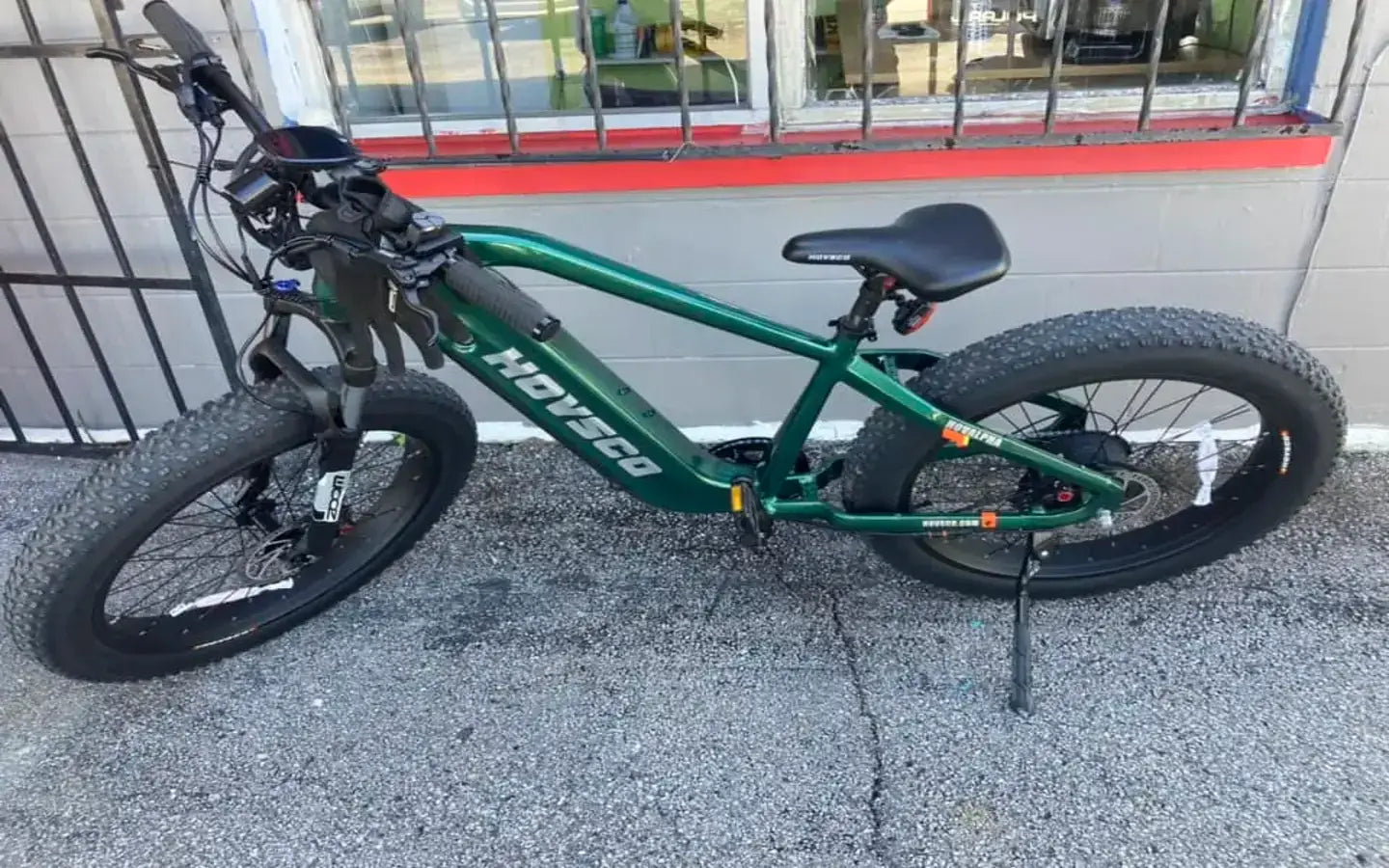
- by LiuJiazhu
What Features Define A Heavy-Duty Cargo Bicycle?
- by LiuJiazhu
Heavy-duty cargo bicycles are defined by robust frames, high load capacities (200+ kg), powerful motors (1,000W+), extended-range batteries, hydraulic suspension, and reinforced components like disc brakes and wide tires. These features ensure stability, durability, and safety for transporting heavy goods, outperforming standard bikes in urban logistics and commercial use.
Reinforced frames and modular cargo areas are critical. Aluminum or steel frames distribute weight evenly, while extended rear racks and adjustable mounts support bulky items. For instance, the Heybike Hauler uses a 20-inch wheelbase and a 3-inch tire width to enhance stability under 200 kg loads.
Beyond basic frame strength, cargo bikes integrate double-walled rims and torque-resistant spokes to prevent wheel deformation. The Hauler’s 80 Nm motor torque ensures consistent power delivery on inclines.
Pro tip: Regularly check bolt tightness on cargo mounts—vibrations from heavy loads can loosen them over time. Think of these bikes as “two-wheeled pickup trucks”: their design prioritizes utility over speed, with components akin to automotive-grade durability. But how do materials impact longevity? Aluminum alloys reduce weight without sacrificing strength, while steel frames offer higher rigidity for extreme loads.
| Design Feature | Benefit |
|---|---|
| Wide tires (3″+) | Improved traction and shock absorption |
| Hydraulic suspension | Smoother rides on uneven terrain |
Torque output (e.g., 80 Nm) determines a cargo bike’s ability to move heavy loads. Unlike recreational e-bikes, heavy-duty models require motors that sustain power without overheating, even at low speeds.
Practically speaking, a 1,400W peak motor like the Hauler’s enables acceleration under full load, while a 7-speed Shimano drivetrain optimizes gear ratios for varied terrain. Technical specs matter: motors with internal gear hubs handle stress better than derailleur systems.
For example, delivering 200 kg of supplies up a 10% grade demands a motor that maintains 45 km/h assist speeds without strain. Pro tip: Pair dual-battery systems with high-torque motors to avoid power drops during long hauls. Ever wondered why cargo bikes rarely use mid-drive motors alone? Rear-hub motors provide direct force to the wheel, reducing drivetrain wear under heavy loads.
Hydraulic disc brakes are non-negotiable for heavy-duty use. They deliver consistent stopping power, even in wet conditions or during rapid deceleration with 200 kg loads.
Mechanical discs, while cheaper, require frequent adjustments under heavy use. The Hauler’s brake setup includes automatic front lights and turn signals—critical for urban safety. Technically, a 203mm rotor diameter enhances heat dissipation, preventing brake fade on long descents. Warning: Never downgrade to mechanical brakes for cost savings; the risk of brake failure under load is catastrophic. Imagine stopping a small car: hydraulic systems mimic automotive braking precision, which mechanical cables simply can’t match. Are organic or metallic brake pads better? Metallic pads endure higher temperatures but may wear rotors faster—a trade-off for load-heavy riders.
Dual-battery configurations (e.g., 1,360Wh) extend range to 136+ km. High-capacity cells (20Ah) and smart energy management prevent voltage drops during sustained loads.
The Hauler’s optional second battery slots into a rear rack, balancing weight distribution. Key specs include 60V rated voltage and 32A overcurrent protection to safeguard against overloads.
Pro tip: Use a charger with 220V/50Hz input compatibility to avoid slow charging. Think of batteries as the bike’s “fuel tank”: larger capacities reduce downtime but add weight. Why not use a single massive battery? Weight distribution matters—dual batteries keep the center of gravity low, improving handling.
| Battery Feature | Impact |
|---|---|
| Dual 20Ah packs | 136 km range at 25 km/h |
| Smart BMS | Prevents over-discharge damage |
Modular accessories—removable racks, passenger seats, and custom panniers—enable customization. The Hauler supports baskets, child seats, and even pet carriers via its reinforced mounting points.
Beyond attachments, spring-damped saddles and 20″ wheels with 3.00-10 tires absorb vibrations from rough roads. A payload capacity of 200 kg demands a stiff rear triangle and torque sensors that adjust motor output based on cargo weight. For example, hauling fragile items? Reduce tire pressure slightly for better shock absorption. But what if loads shift mid-ride? Wide footpegs and non-slip surfaces on racks minimize movement risks. Pro tip: Secure loads with elastic cargo nets instead of rigid straps to allow slight flex during turns.
No—consumer-grade frames lack the reinforcement needed for sustained heavy loads. Retrofit attempts risk structural failure.
Are hydraulic brakes mandatory for cargo bikes?Yes. Mechanical brakes can’t reliably stop 200+ kg loads, especially in emergencies or wet conditions.
How often should I service a cargo bike’s motor?Every 1,500 km or quarterly, whichever comes first. Check torque sensors and bearing seals for wear.
Share:
What Benefits Do Cargo Bicycles Offer Urban Family Transportation?
What Makes a Cargo Ebike the Ultimate Urban Utility Vehicle